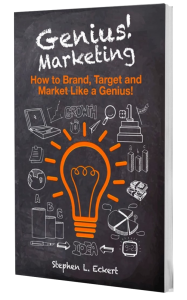Unique Selling Proposition:
Unique Selling Proposition: Uniquely You
I once asked a customer who made a product that was a commodity item about the idea of unique selling proposition and brand attributes. If you make paper cups, how unique can you be? The customer responded that the product was a commodity, pricing was a main driver of sales, but they competed and won business not only on price but by how they served the customer.
Brand Attributes Come from Who You Are
The reality is that even a product very similar to others is still made and delivered in a unique way. It is imperative to understand this and to look seriously at your organization, its processes, people, and culture to determine what brand attributes are unique. The way you operate the business or interact with customers is often the best place to look for unique brand attributes. It turns out my paper cup making friend had several unique advantages.
One was being an early adopter of web-based automatic refill systems in their e-commerce functionality. Another was the people that worked in the customer service area. They were committed to not only fast response but were empowered to make decisions that other companies would only permit by senior management. These were attributes that created unique value.
Possible attributes that could be part of a unique selling proposition:
- Product functionality
- Product options like color, size, or accessories
- Pricing
- Payment terms
- Delivery options
- Customer training
- Information resources
- Customer service contact options
- Customer club, premium, or status
- Access to top management
- Relationship building
- Partnerships with other vendors
- Company culture
- Community involvement
- Charitable commitment
It’s Been Done – But Not Like You Do It
All of the list above (and more) have been part of a company’s unique story. However, you do it differently. Uniquely. Your company, your brand, comes from your culture, your focus, and your mission. What is your story and how can it be communicated to your customers and prospects
Build a Unique Selling Proposition
Once you have the unique attributes (or at least uncommon attributes), you can think about developing your Unique Selling Proposition. The USP is sort of like a 30-second elevator pitch of branding. Or a customer-centric mission statement. It should answer the question of why a person or company would buy your services. What you do for them and how you do it.
The Unique Selling Proposition should start with one statement that takes into account what matters to a company, why customers buy and the unique brand attributes. Here’s an example:
Our best customers buy multiple products from us. It’s important to them to have one vendor to coordinate their inventory levels and ease their cash flow. We send products in drop shipments to meet their needs, but the frequency of shipments isn’t a problem. They need it when they need it and we always deliver!
What are the key attributes communicated to the prospect or customer in this USP?
- Multiple products from one trusted vendor
- Manage inventory
- Control cash flow
- Drop shipments on demand
Pivot to the Customer to Make the Unique Selling Proposition Matter
The Unique Selling Proposition is built on the attributes of your company. However, the focus is on the benefits to the customer – why they should buy. The USP answers that most important question: What do you do for me (the customer)?
Here are some questions to ask to uncover the unique company and brand attributes of your organization.
- What are the attributes of your organization? Which directly come from who you are, how you deliver your product or service? Which are unique (or at least uncommon)?
- How do the people on your team affect the customer experience, and therefore, the brand?
- What matters? What is the mission and values of your organization? How does this benefit the customer?
- Think about your organization. What are the first ideas, images and words that come to mind?
There’s more help in the book Genius! Marketing or if you need help developing your marketing messages, contact us.
SLEckert


